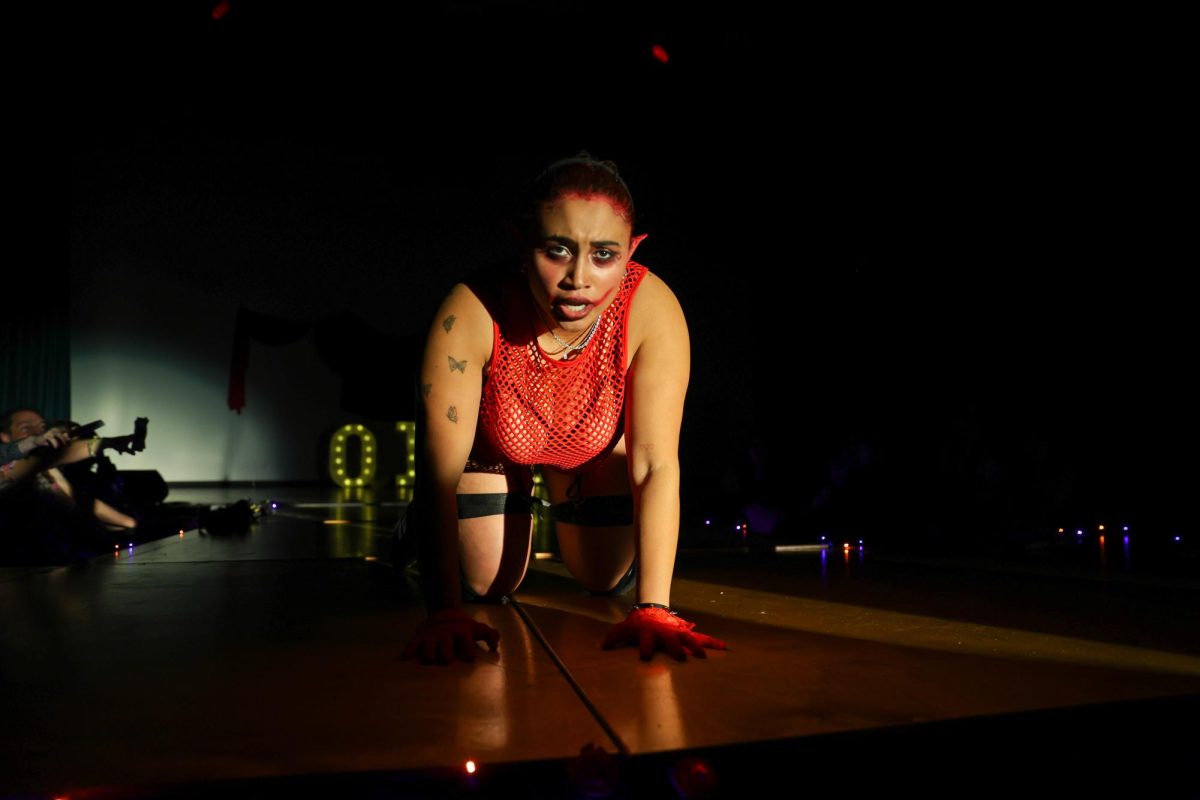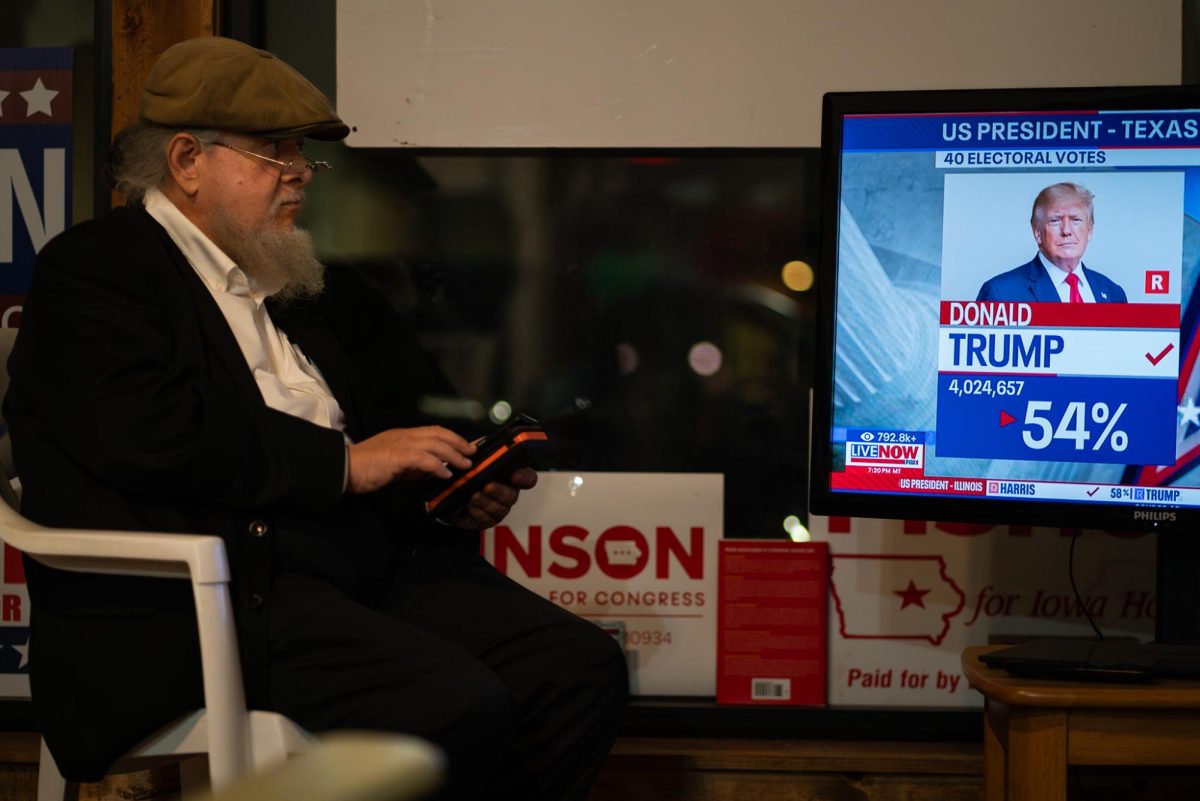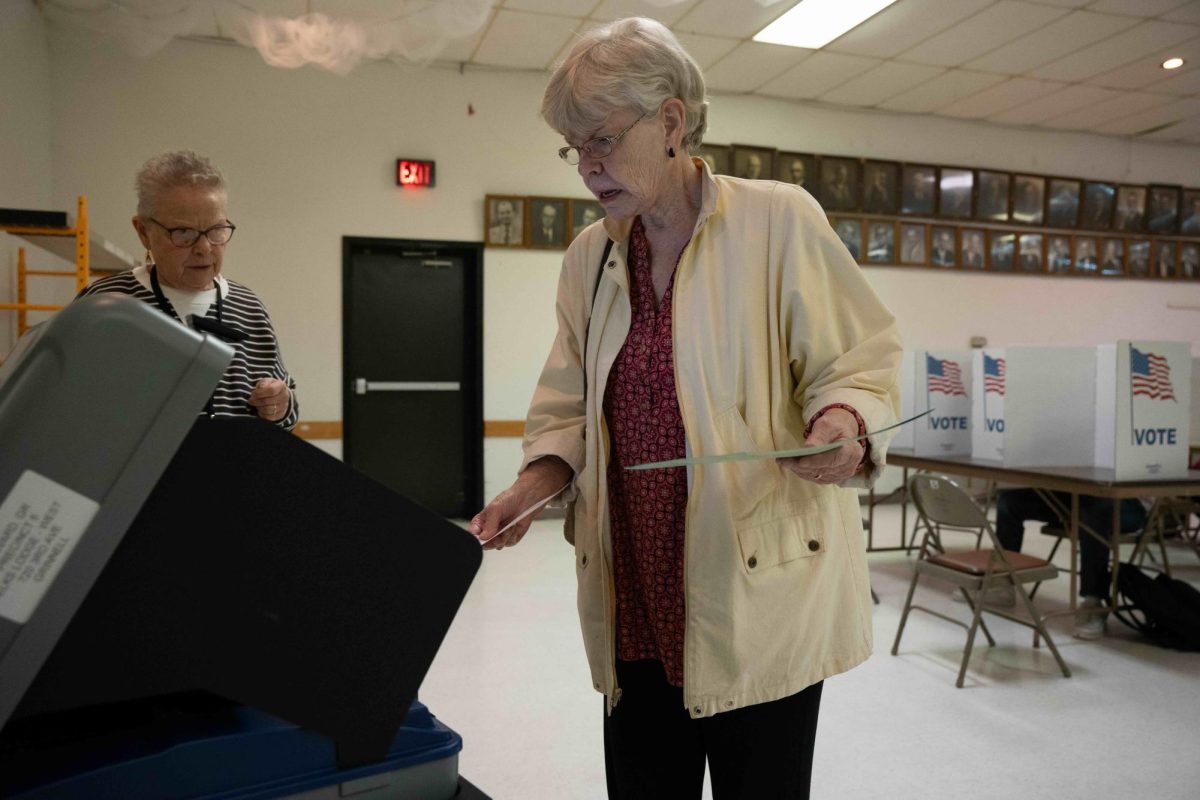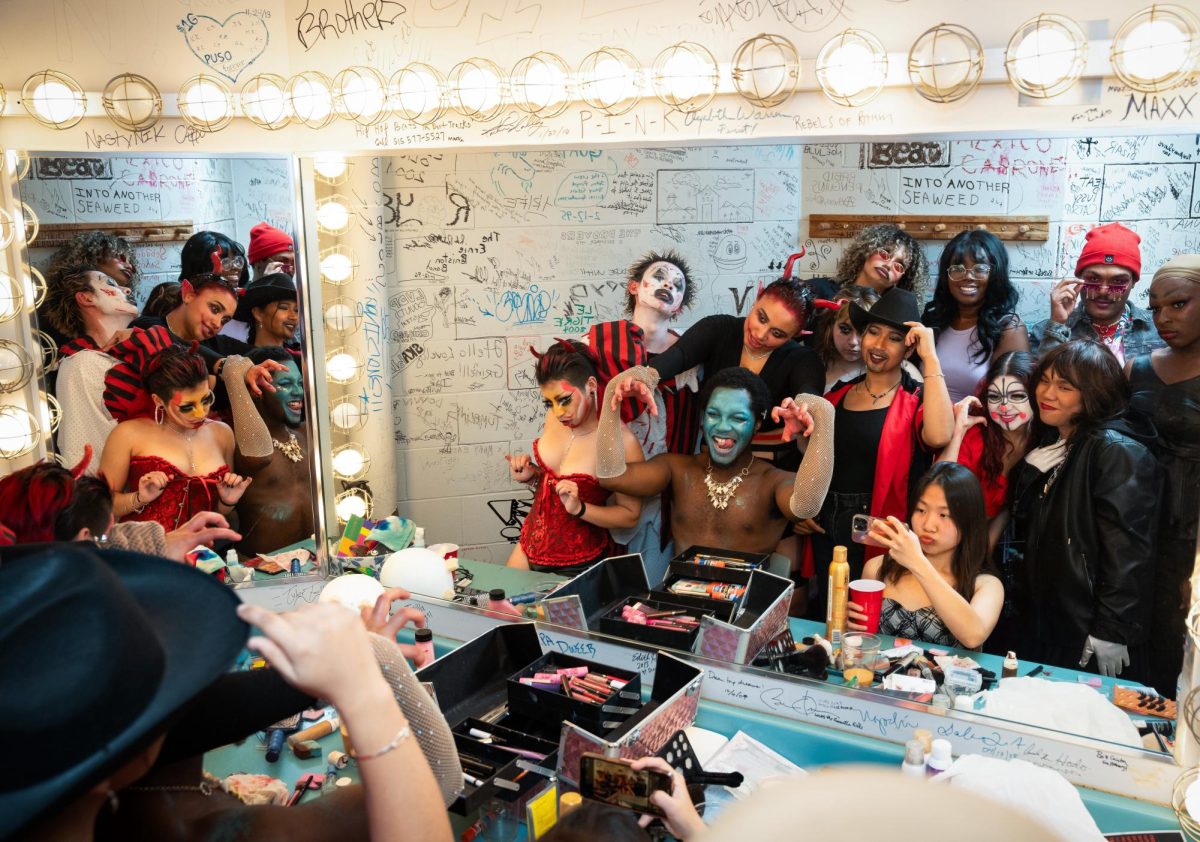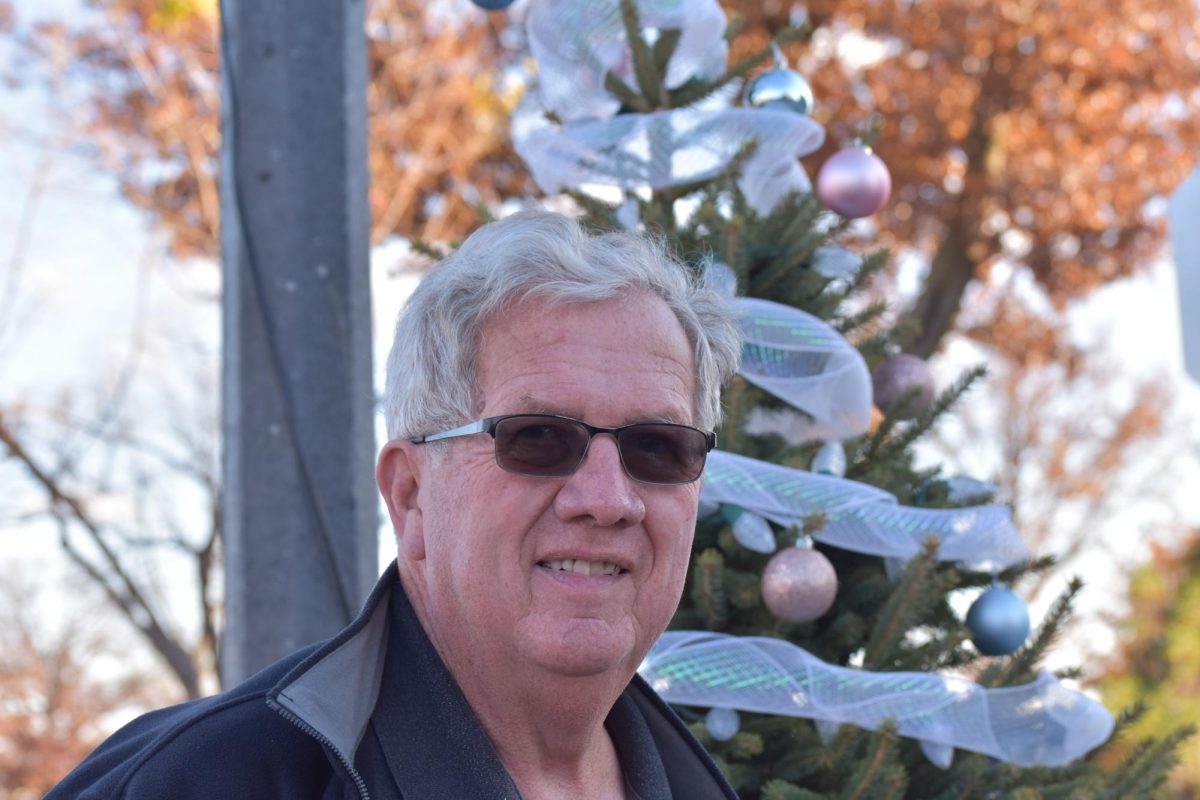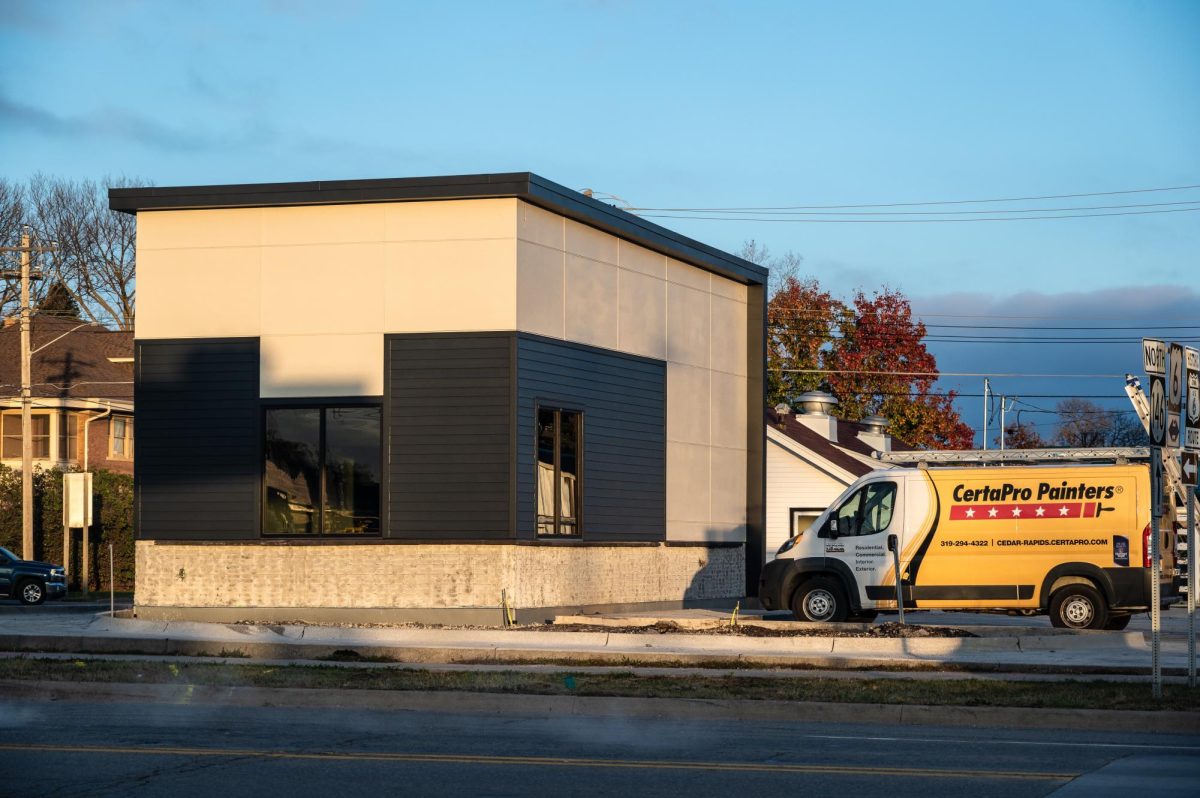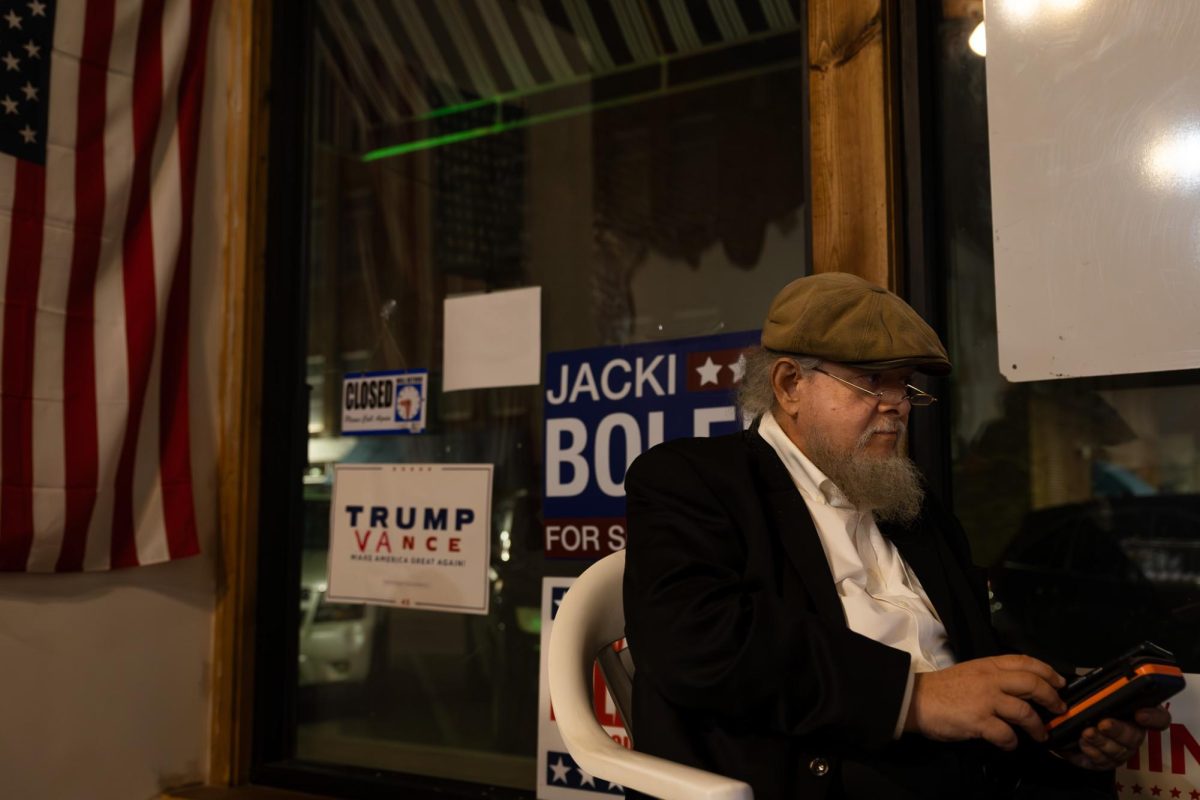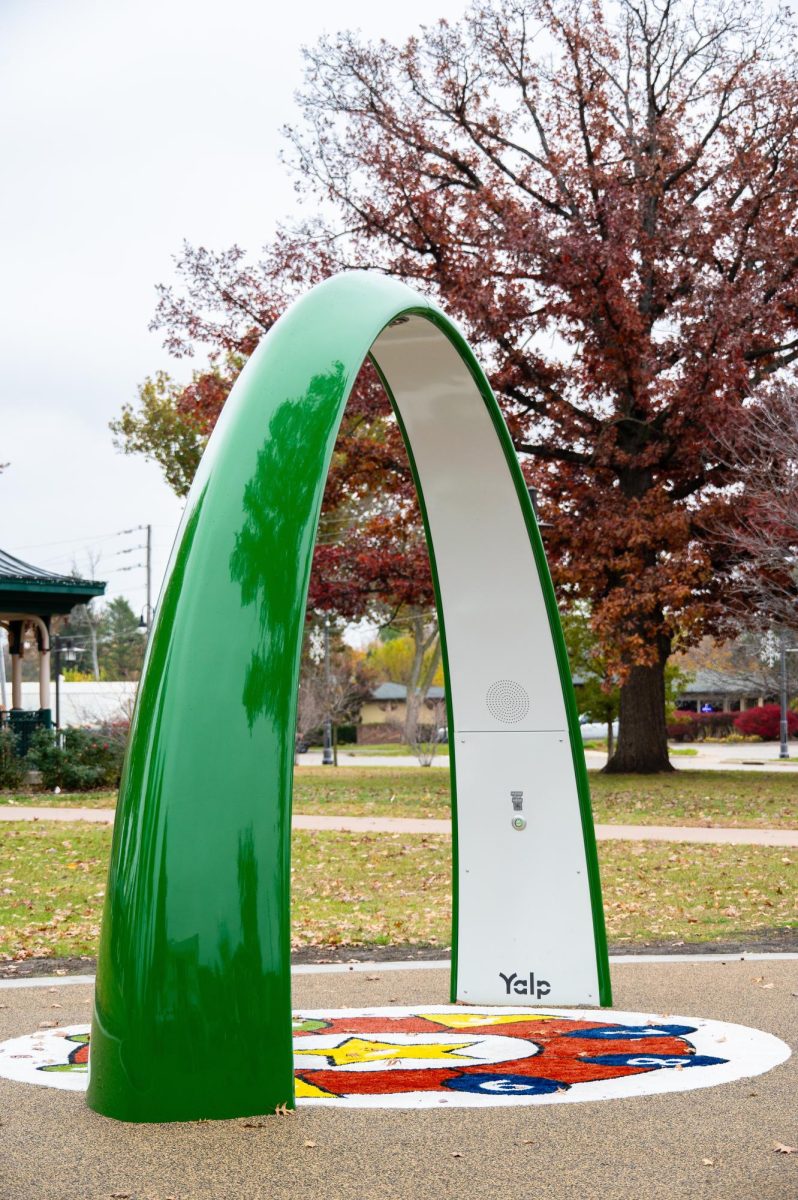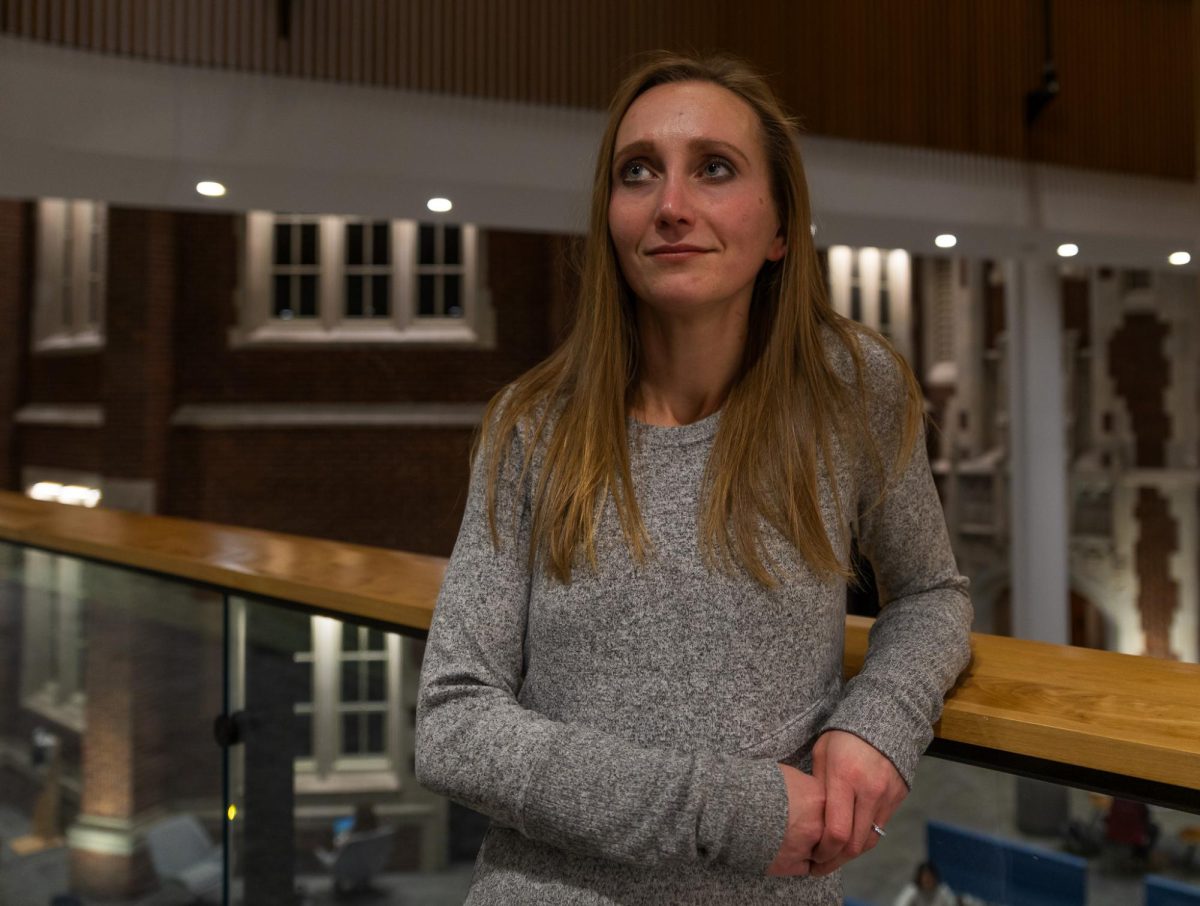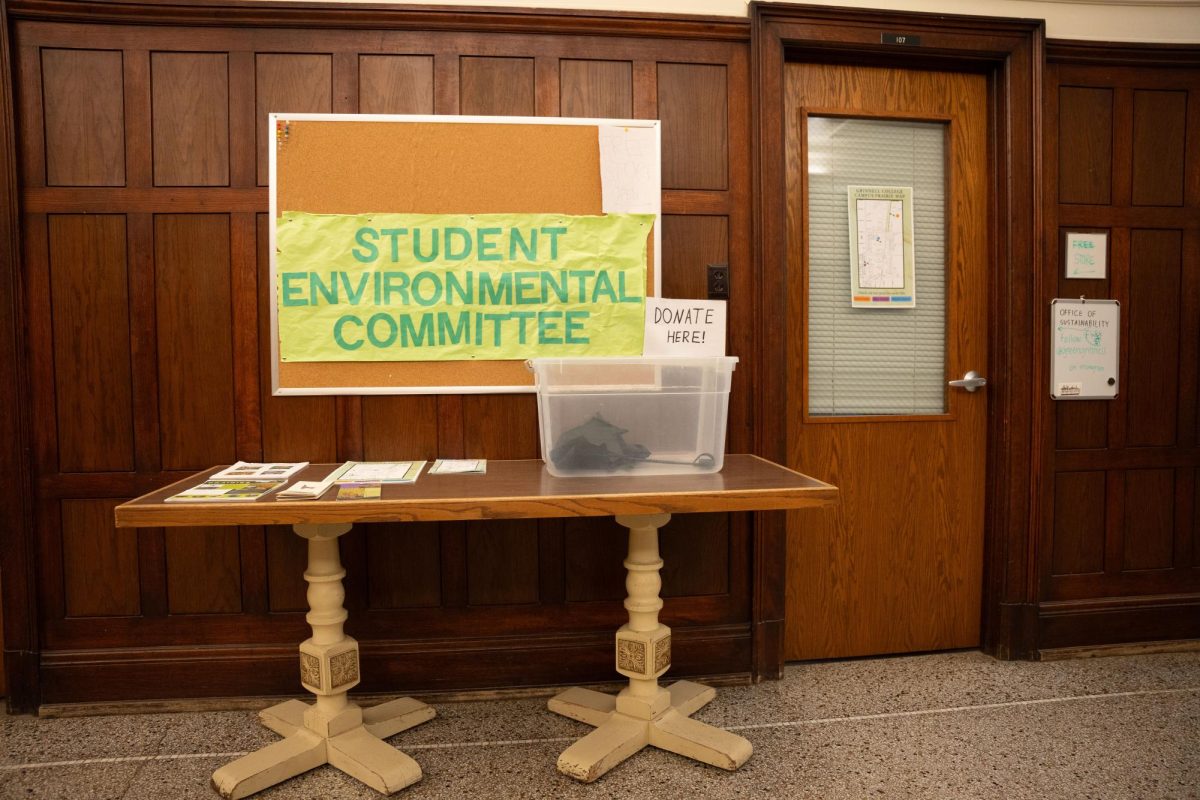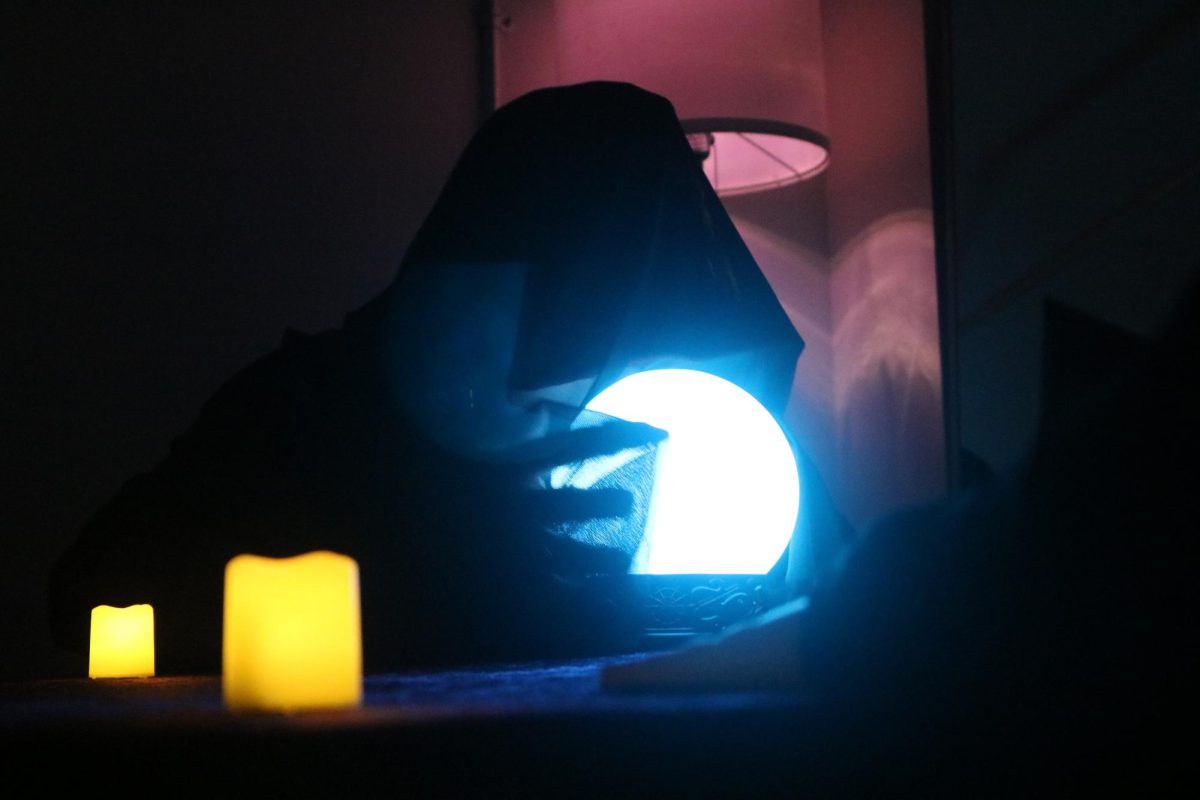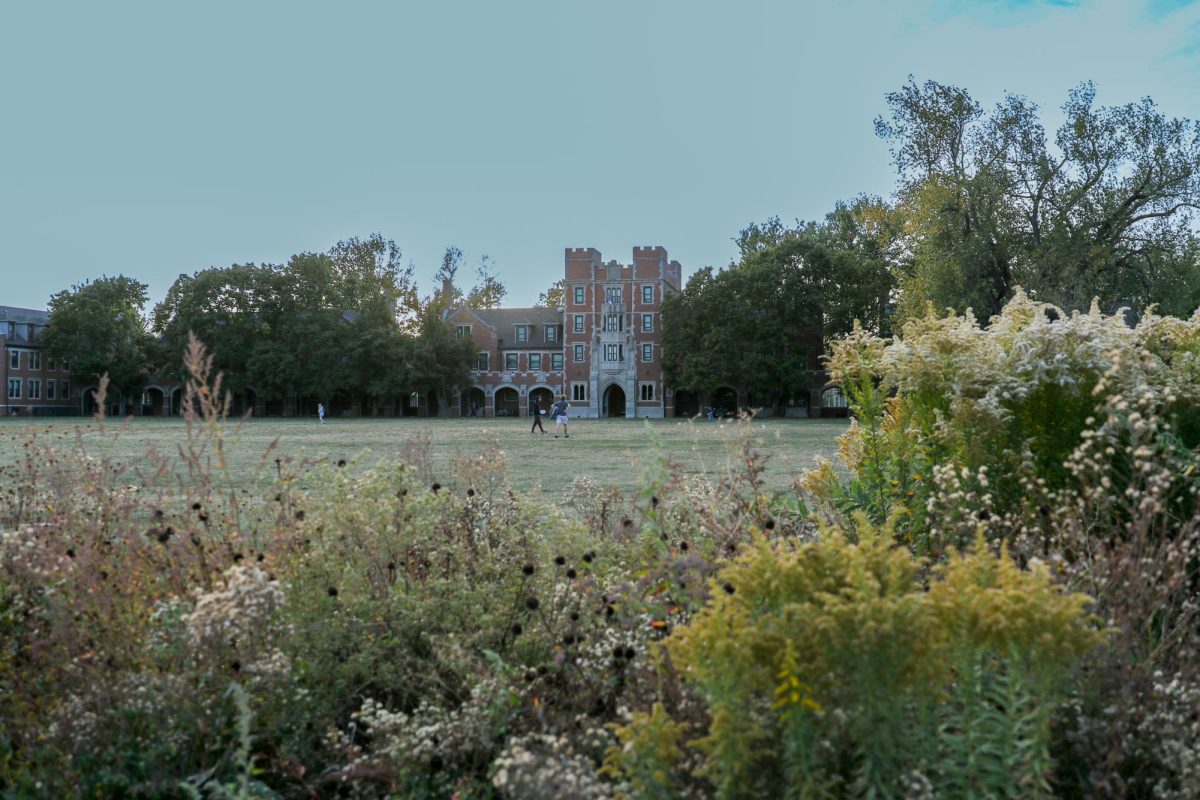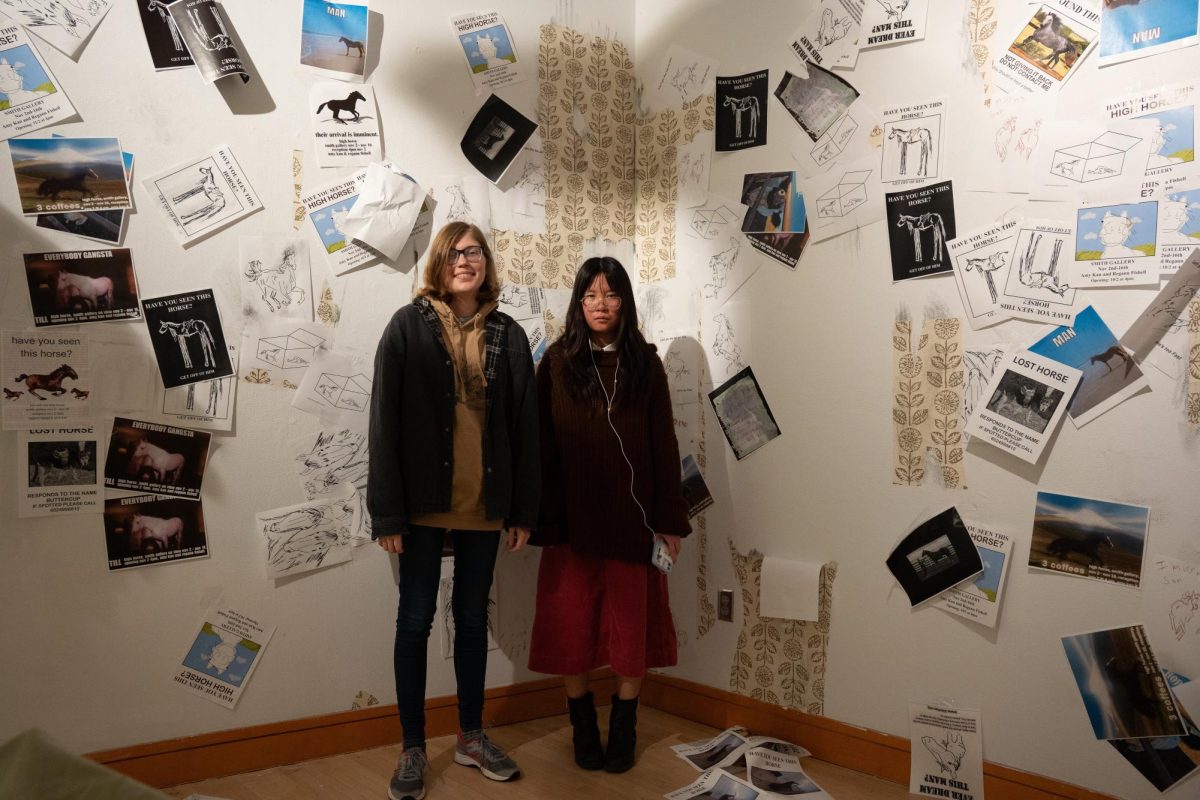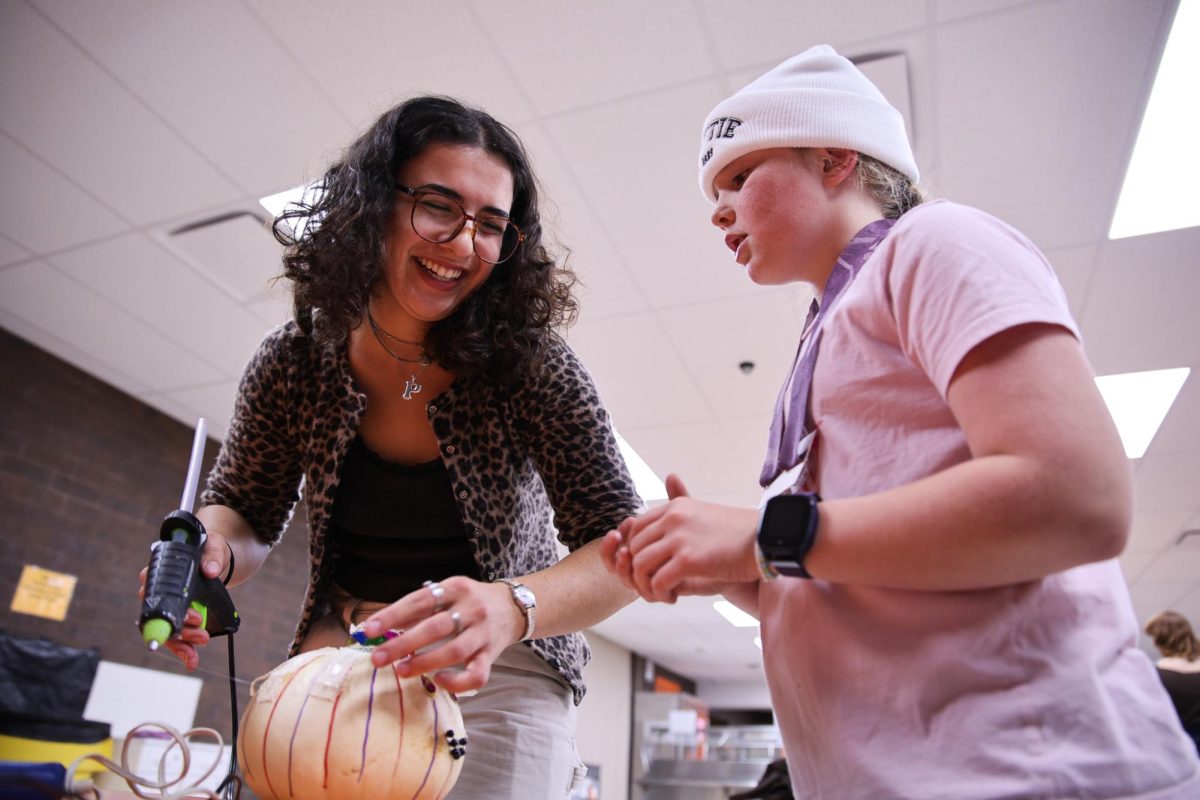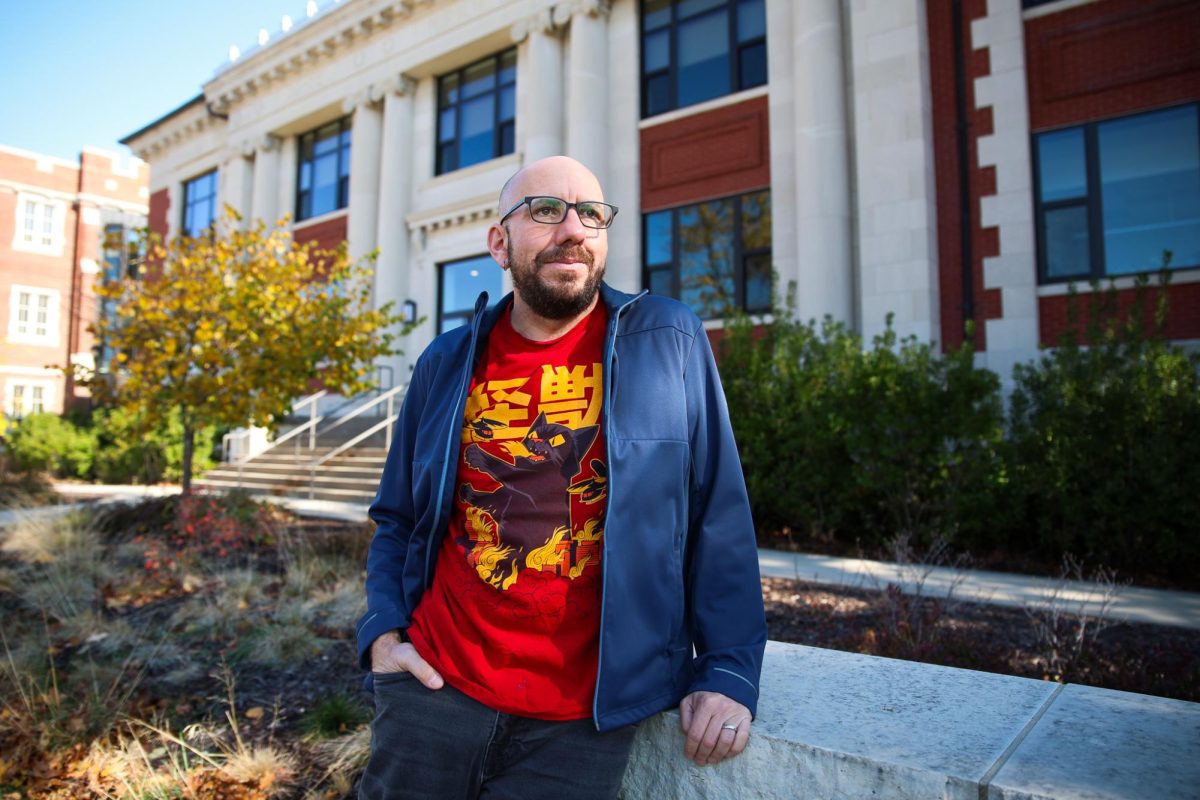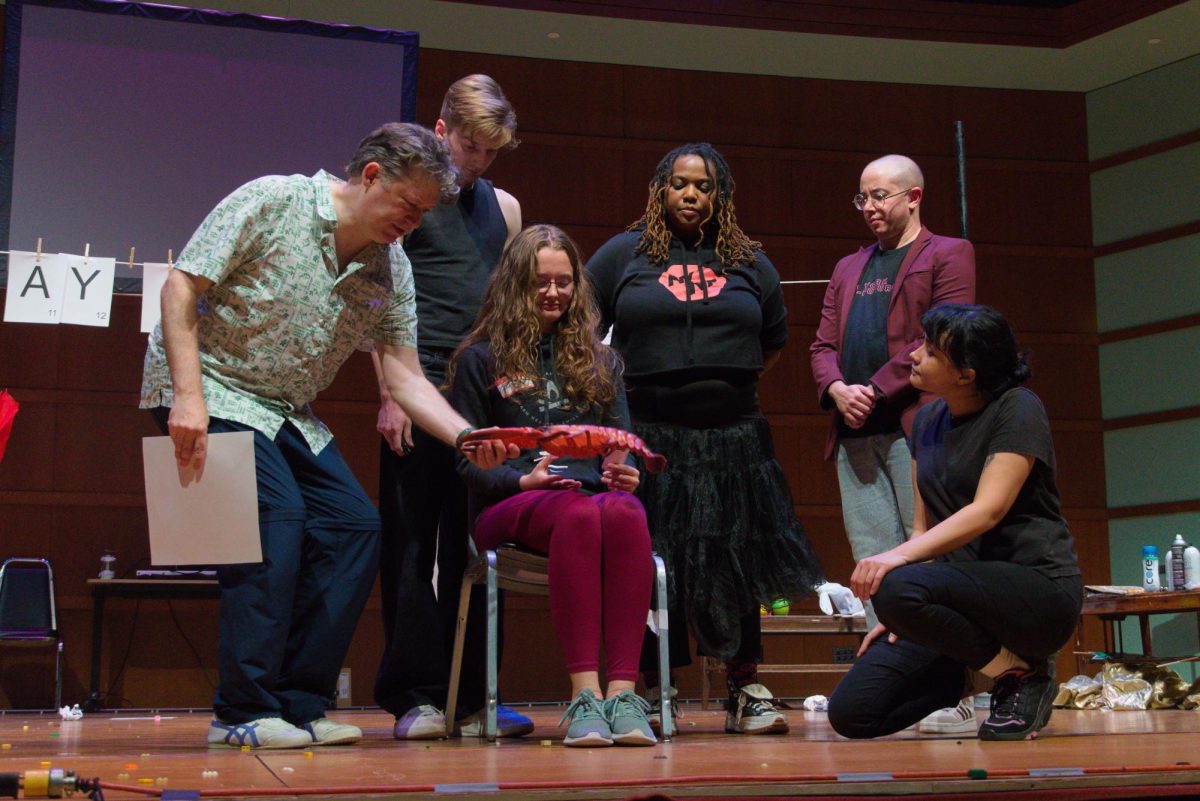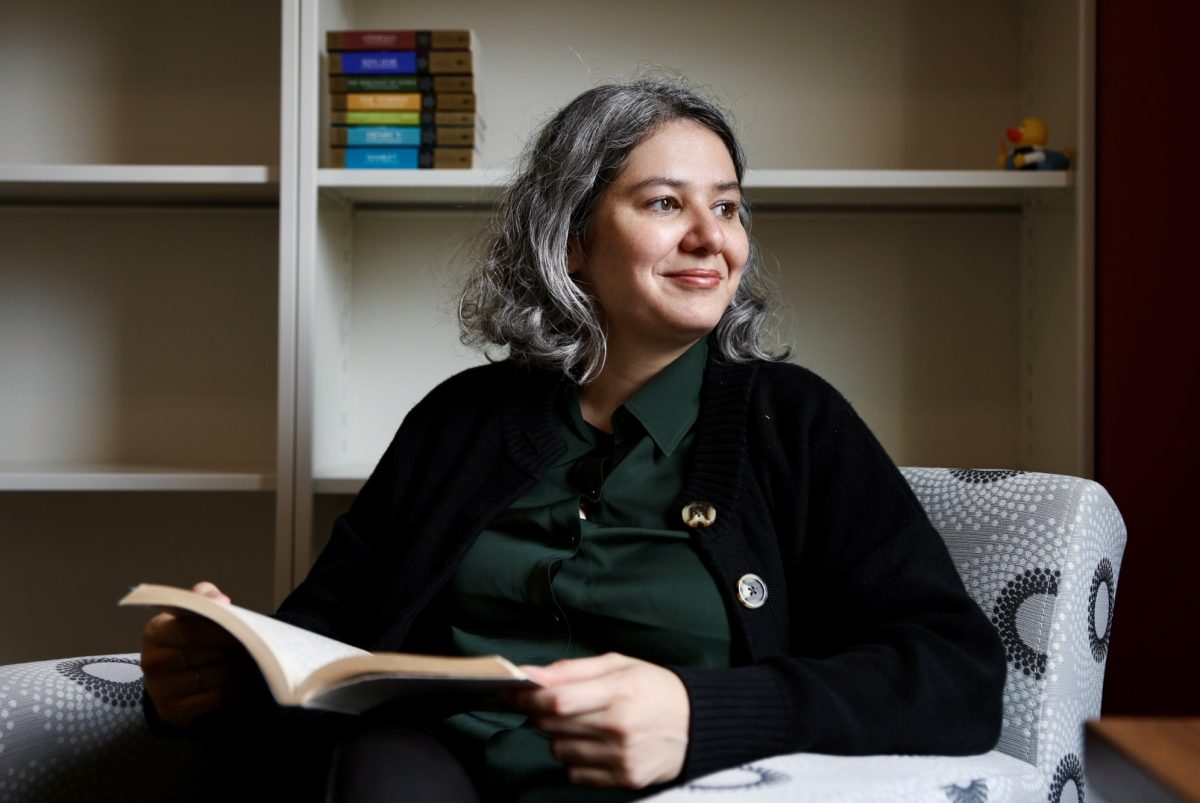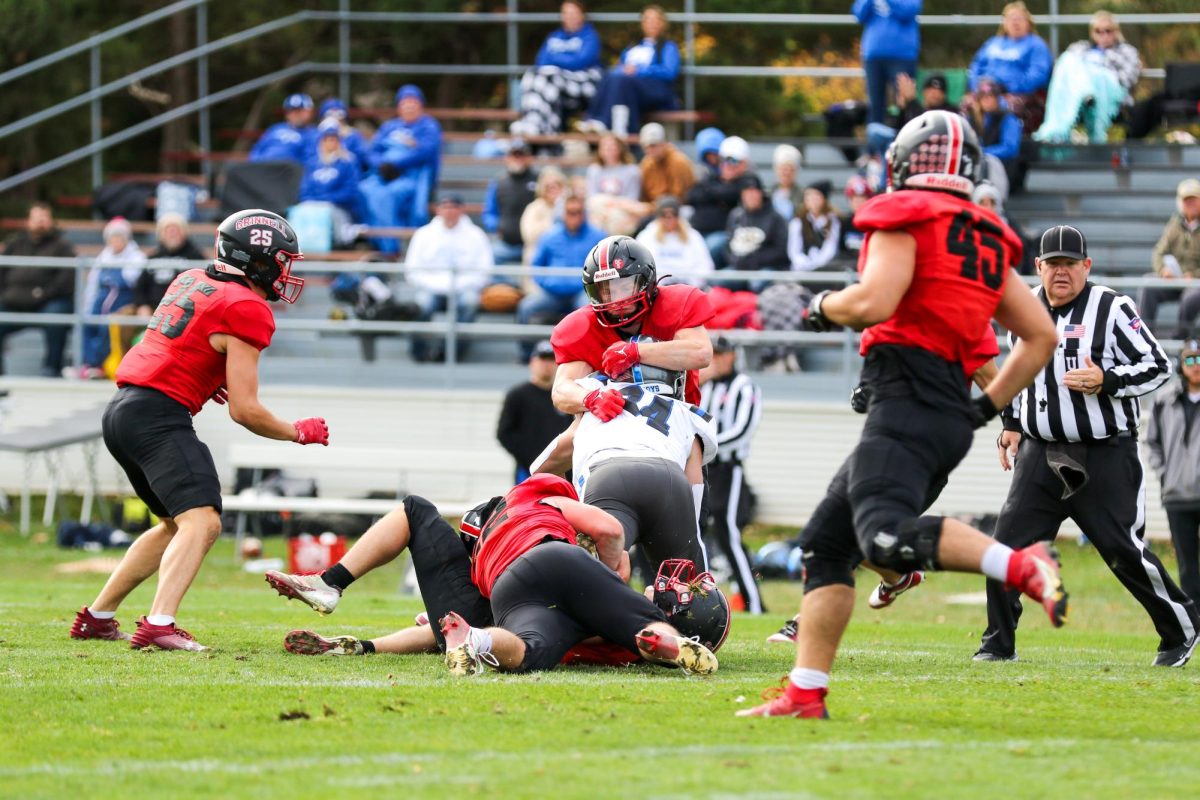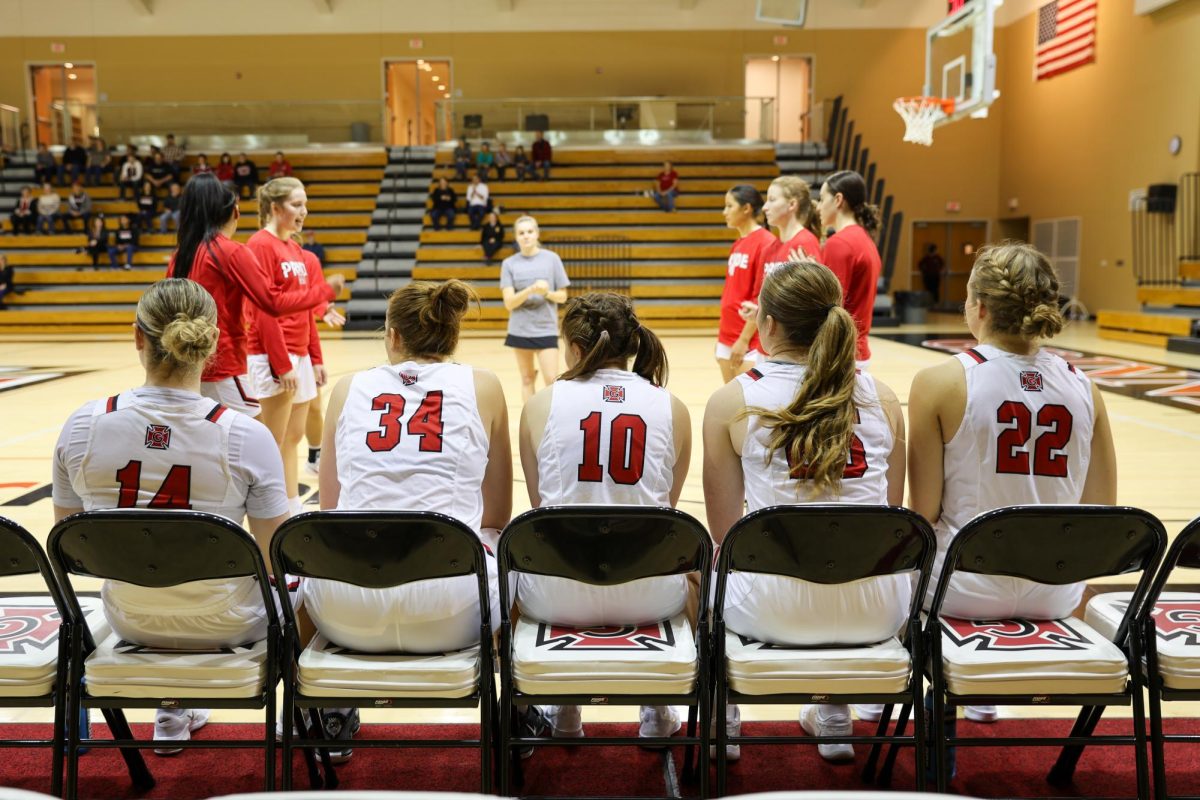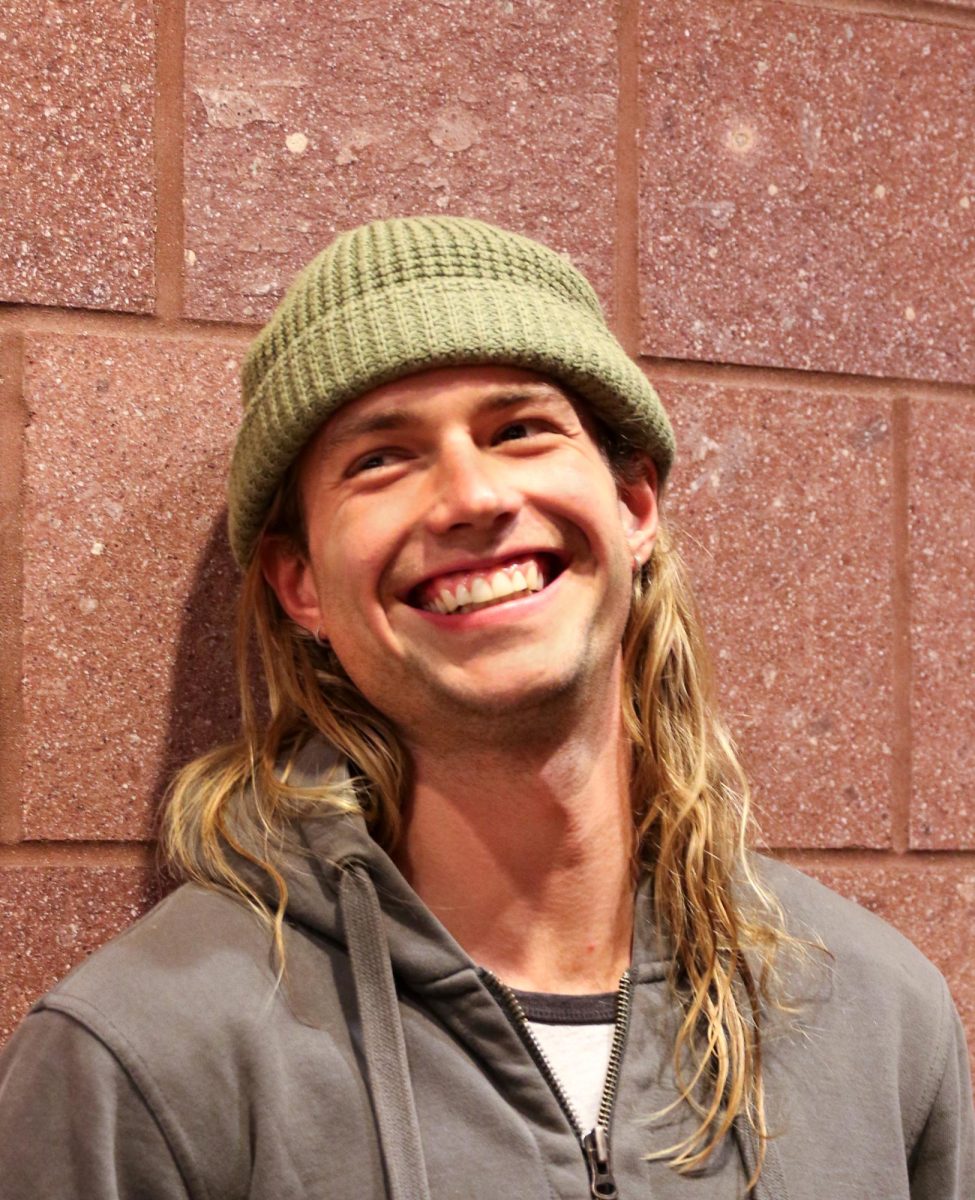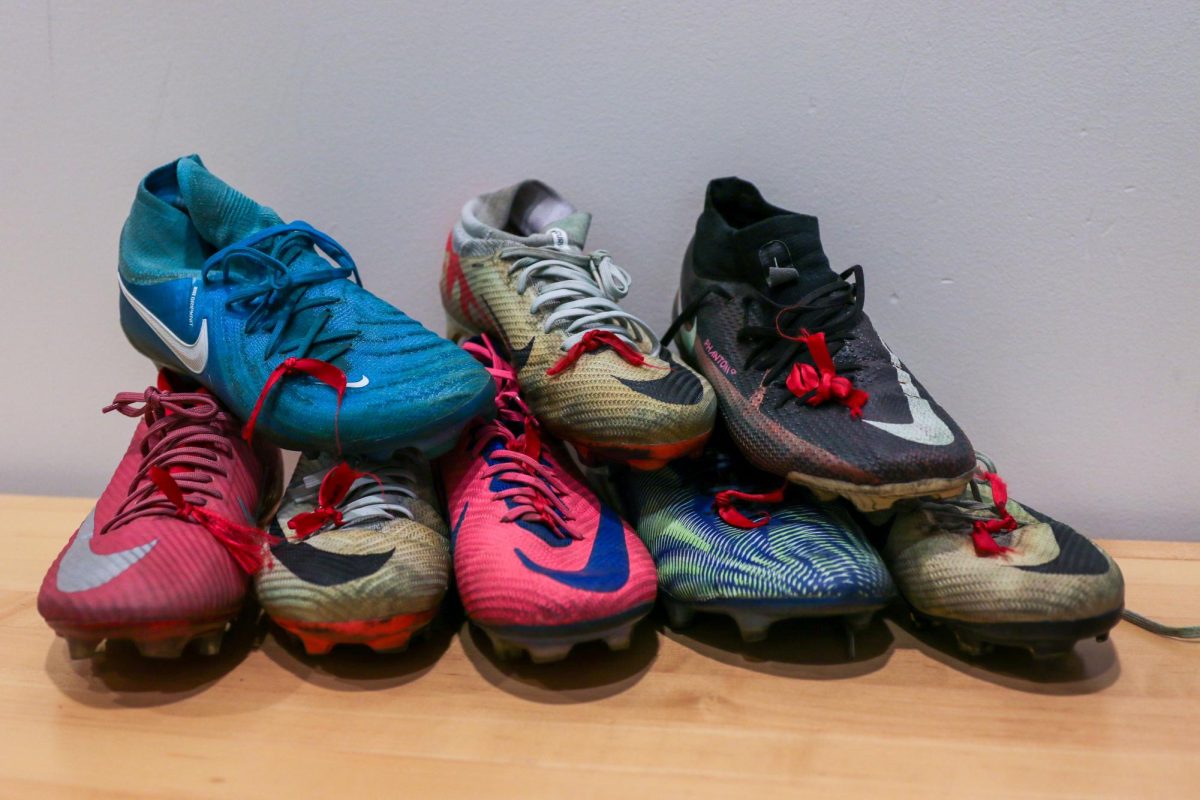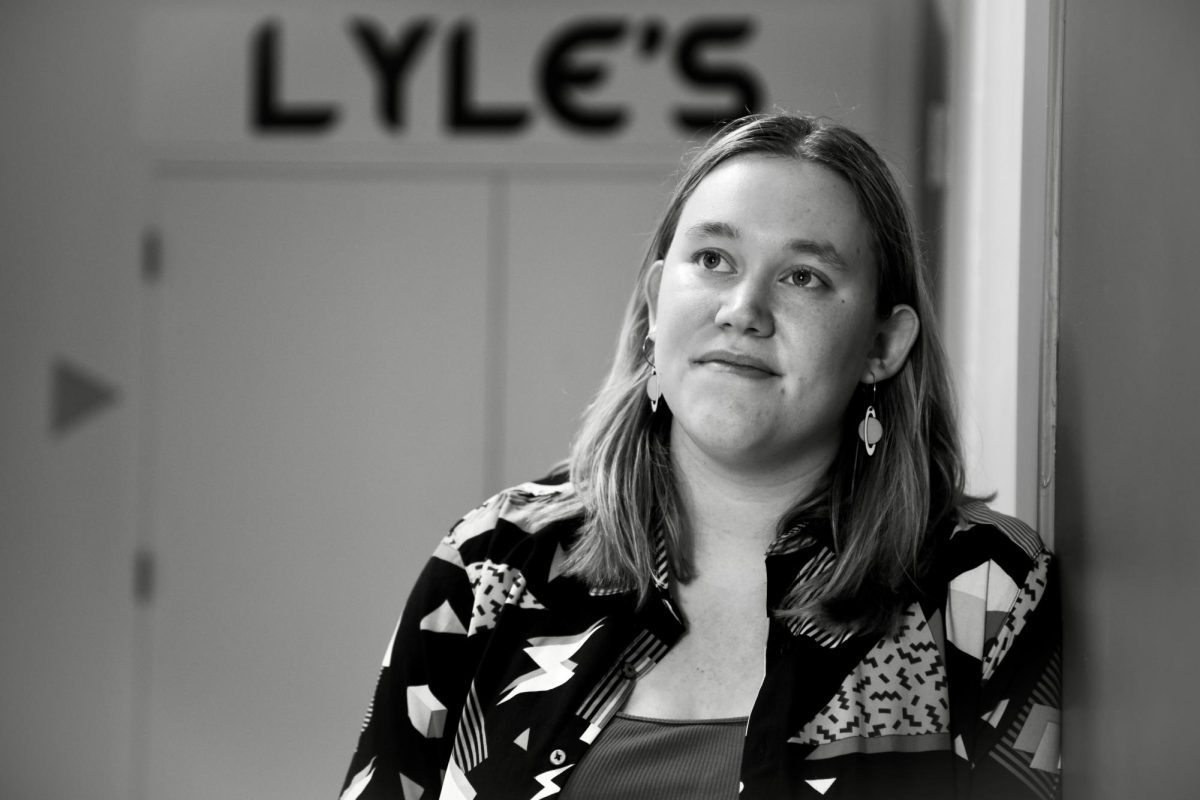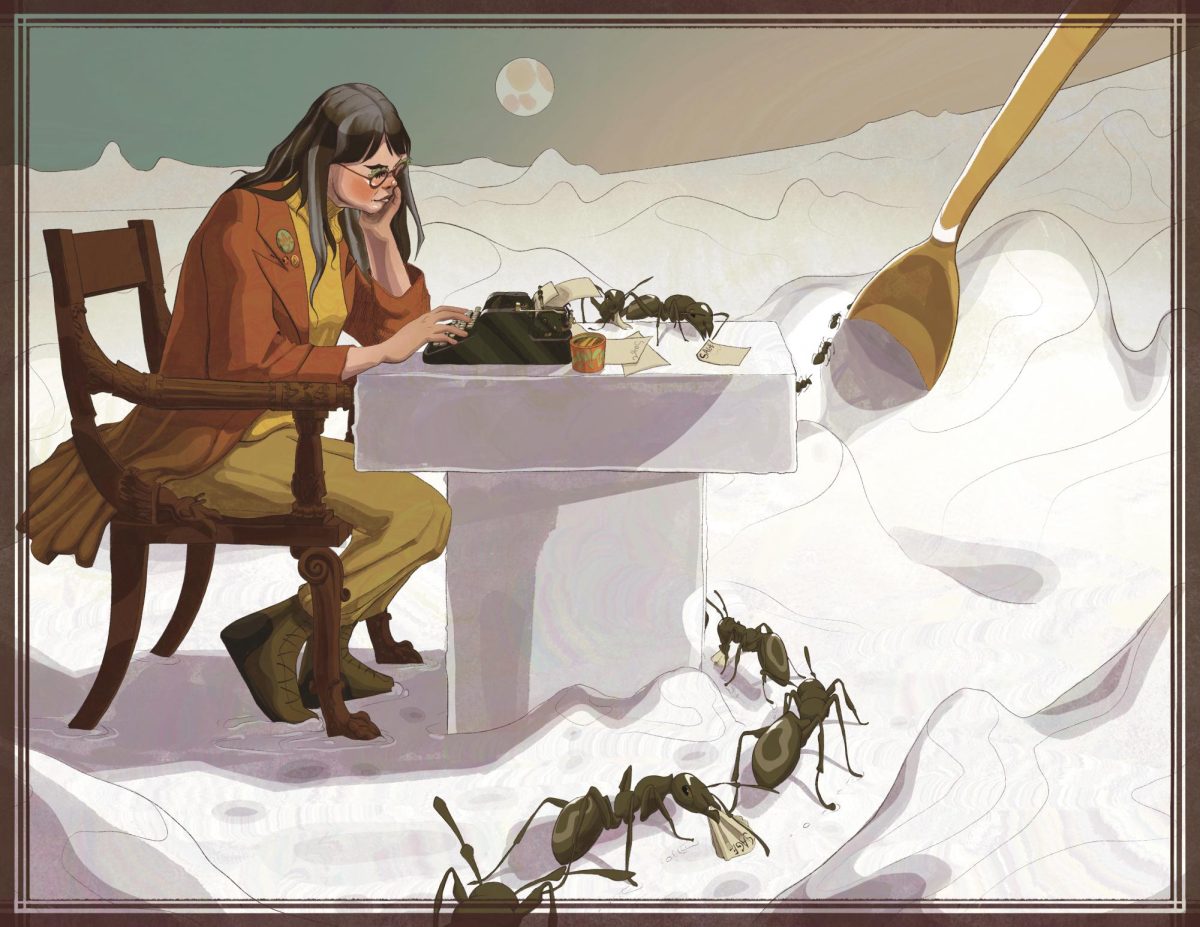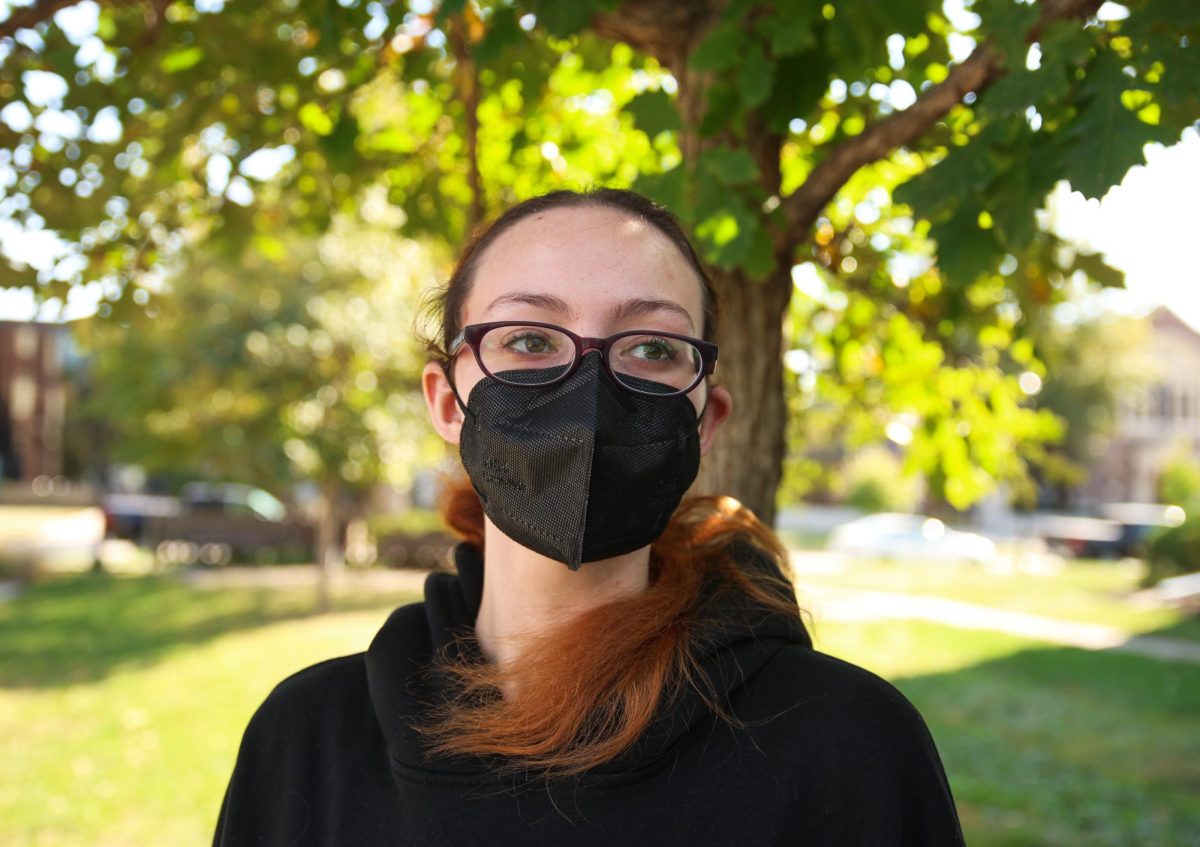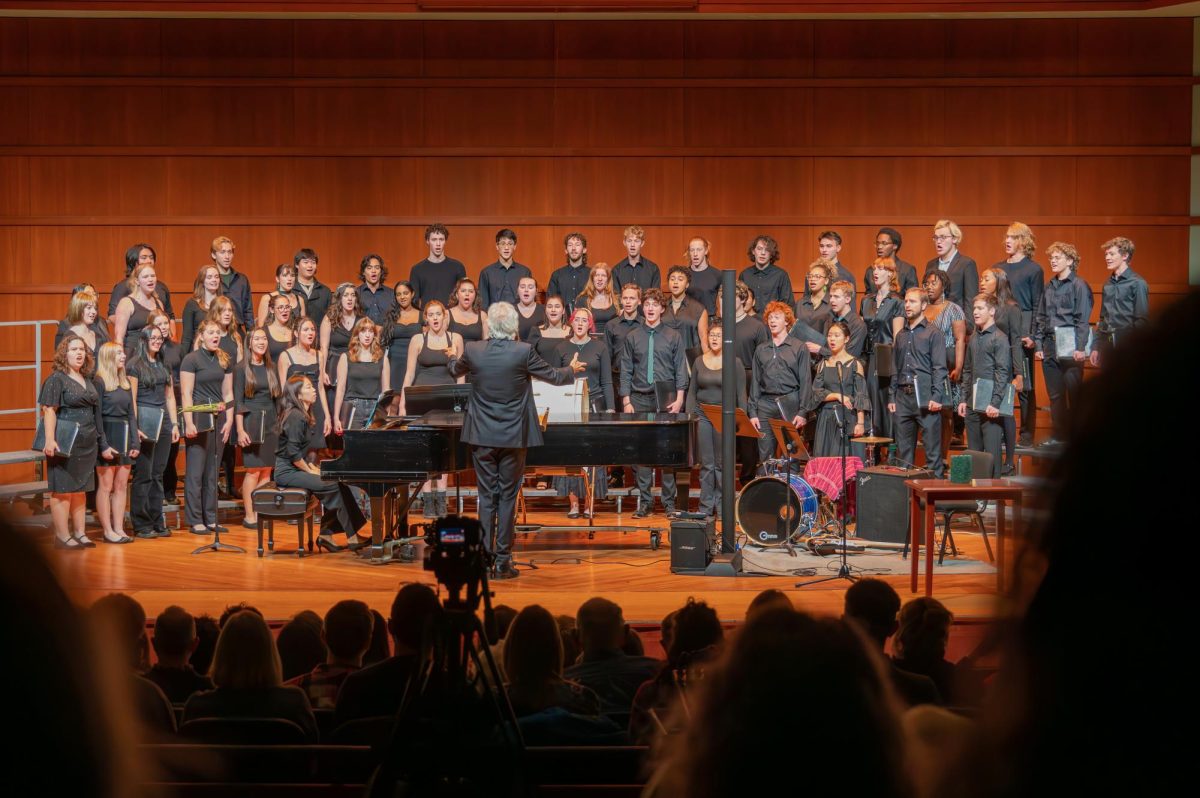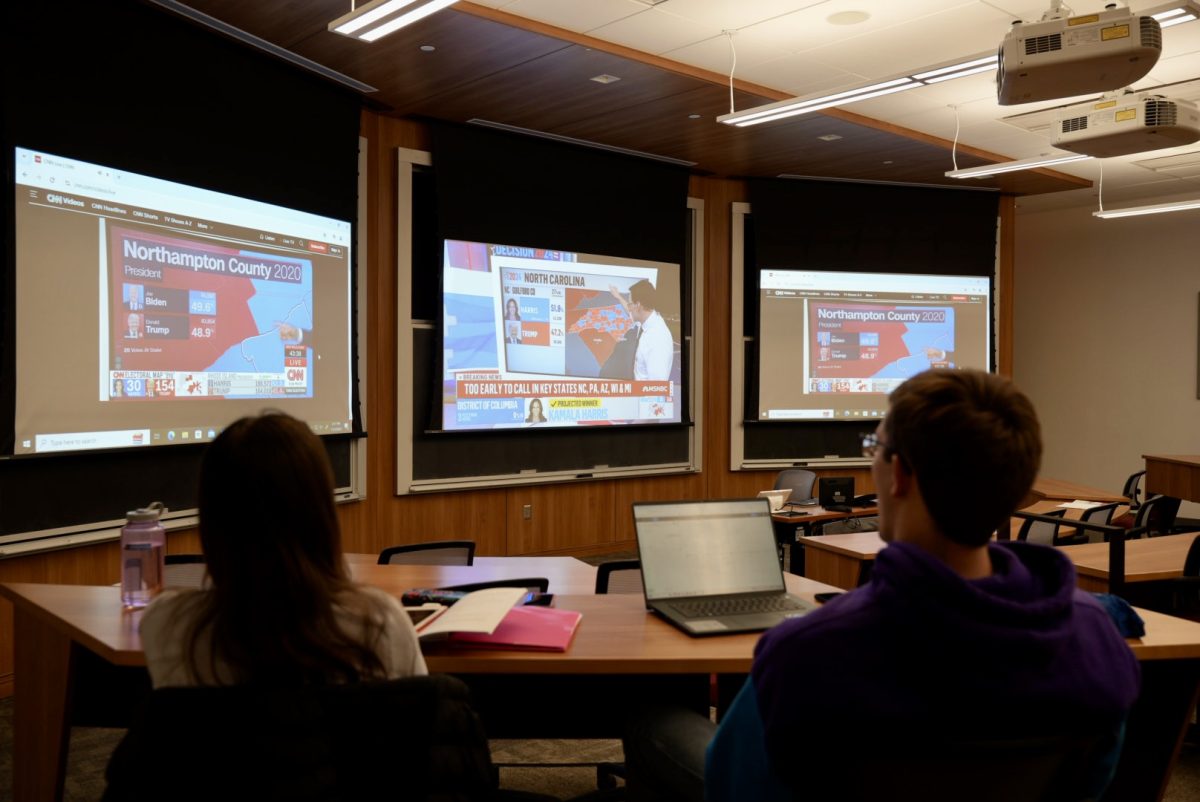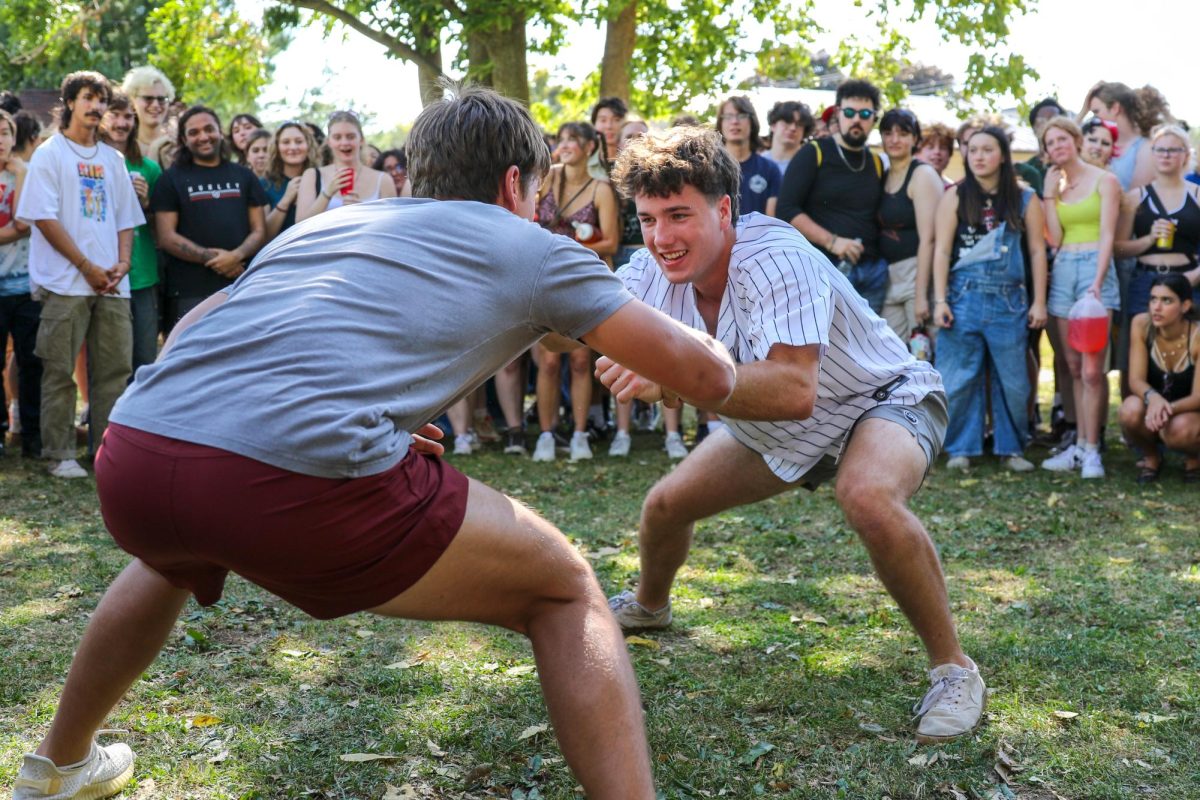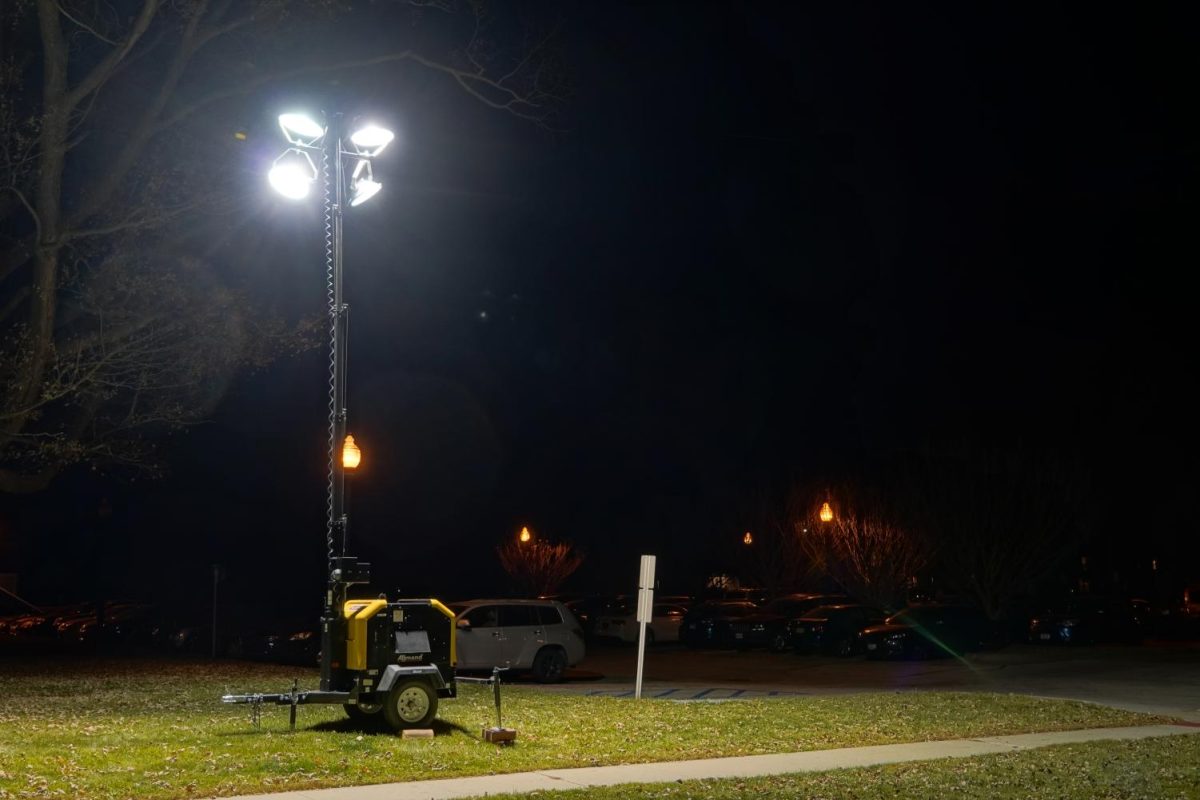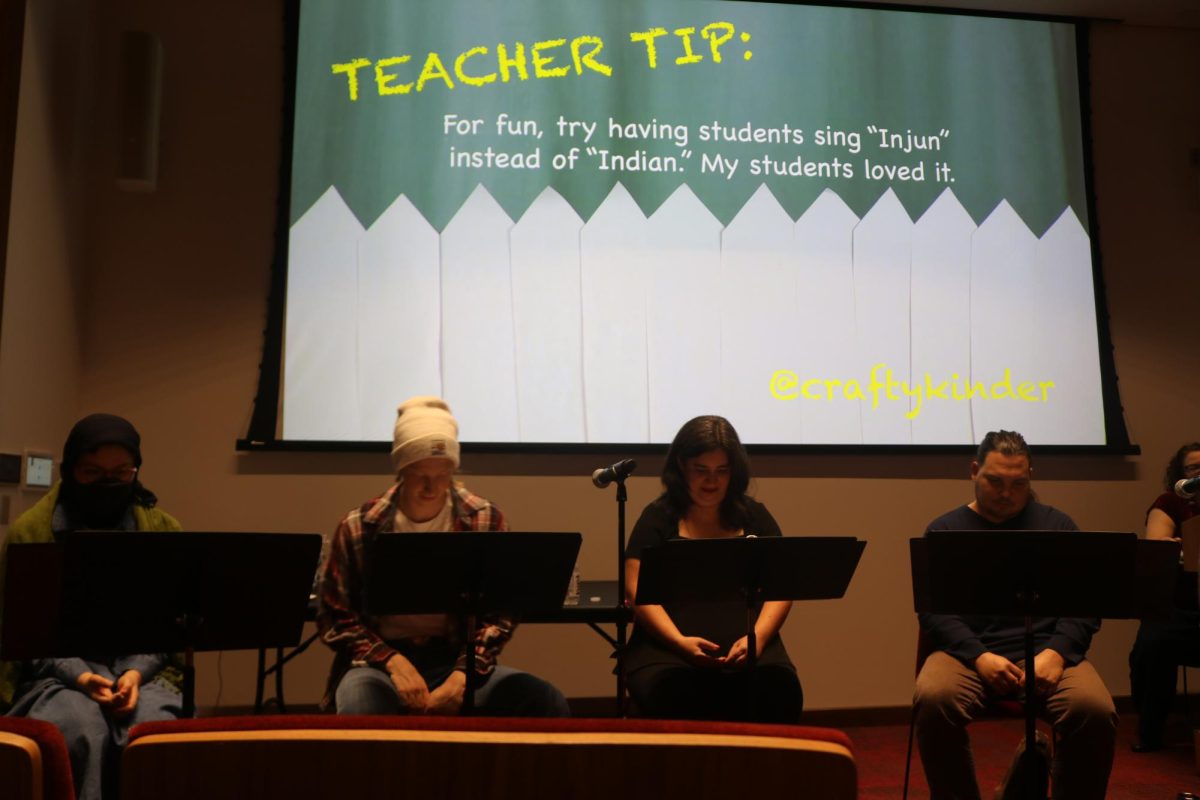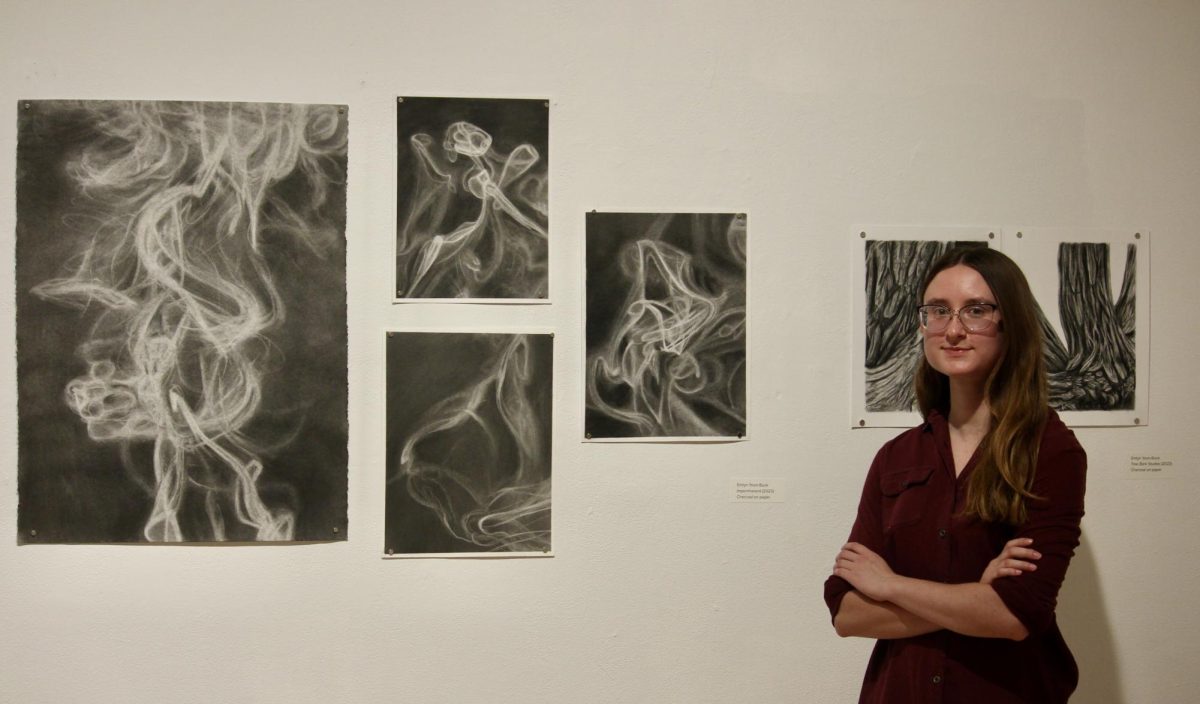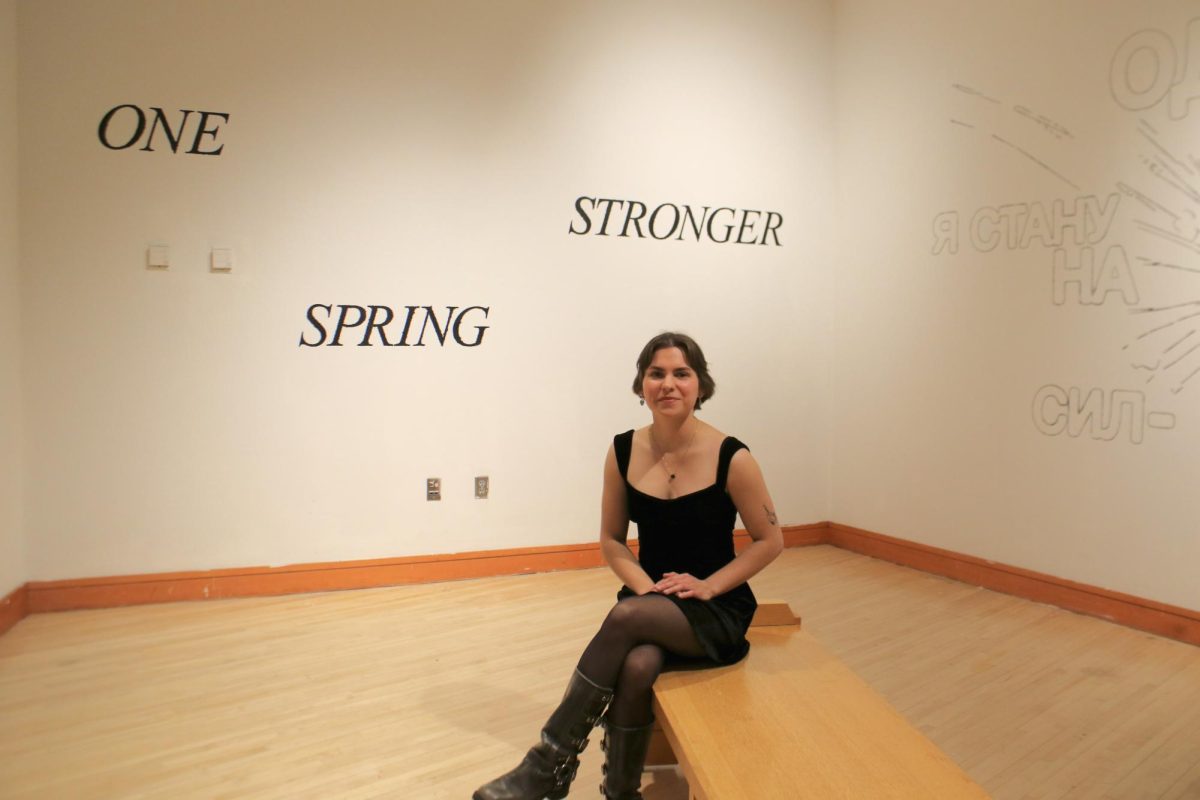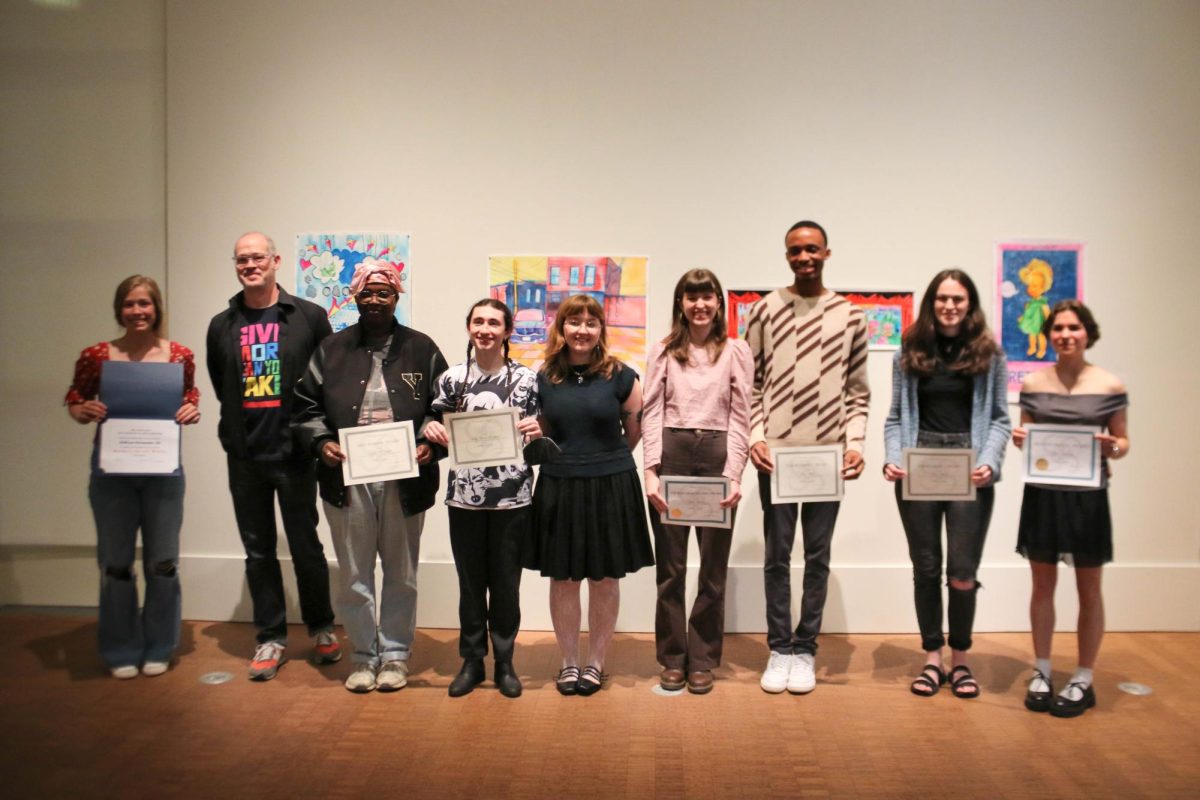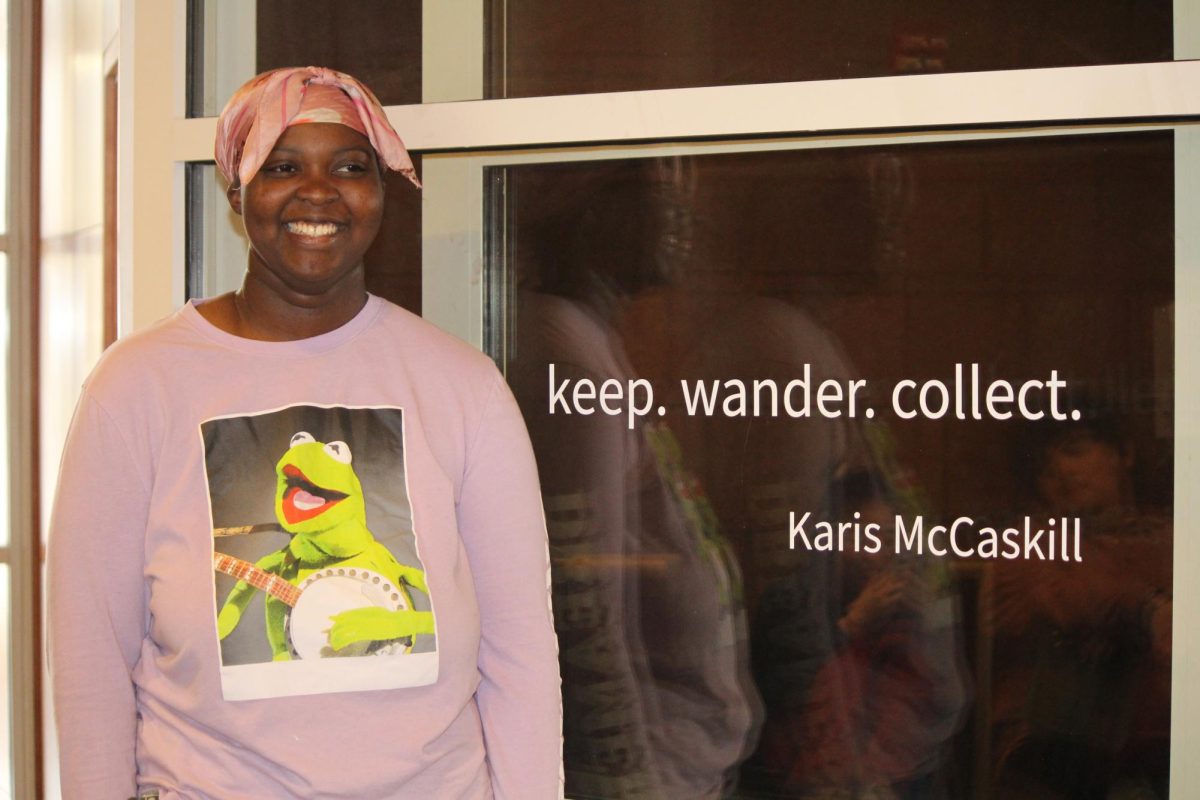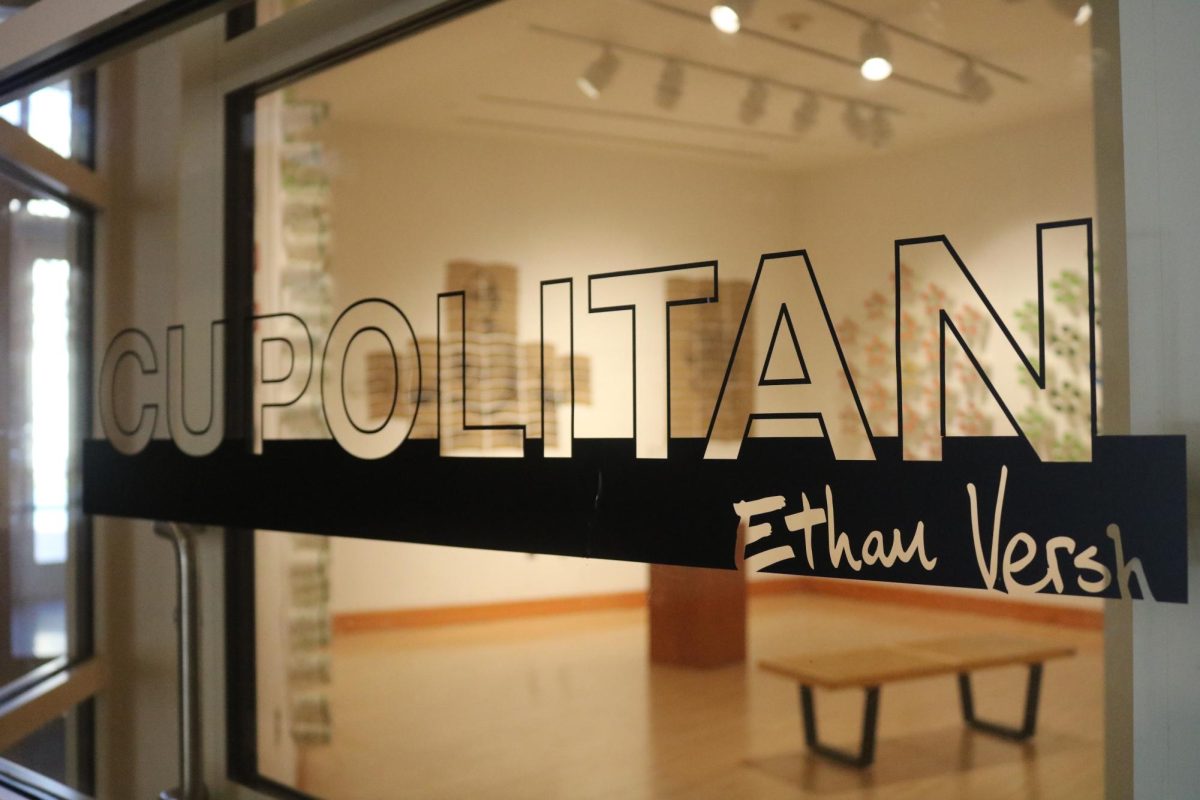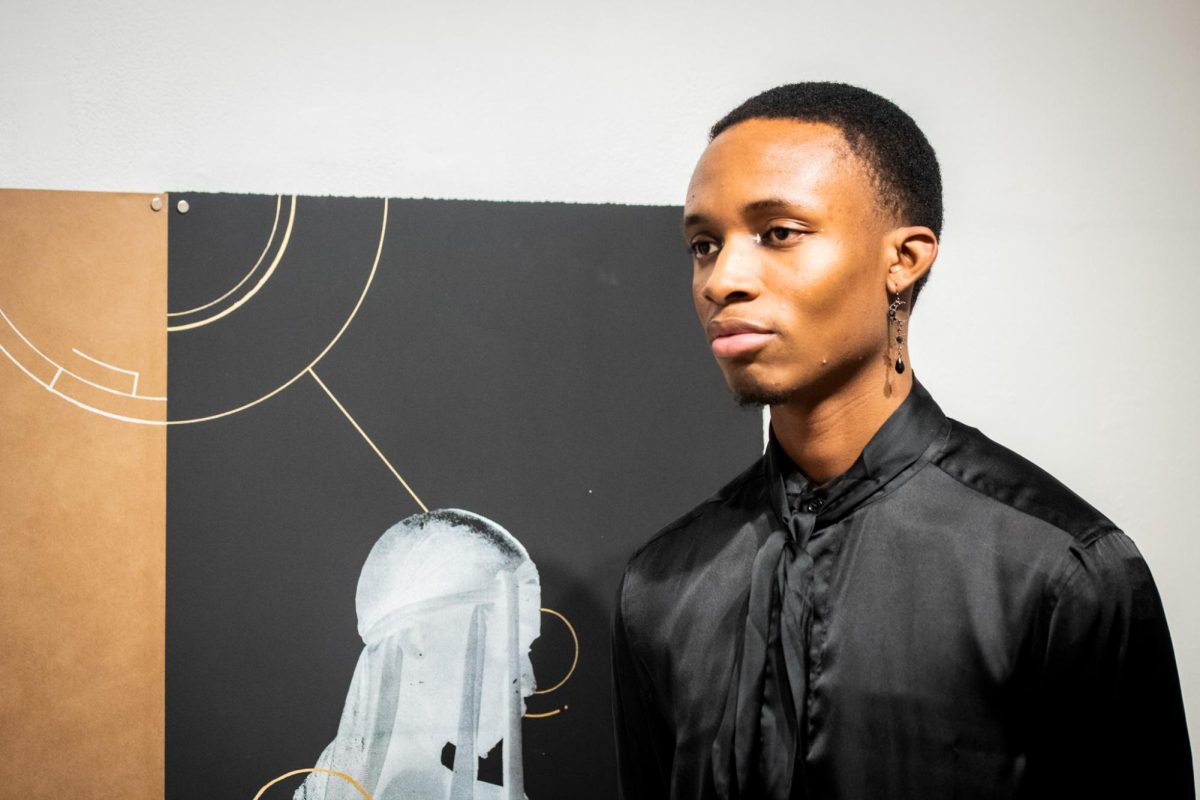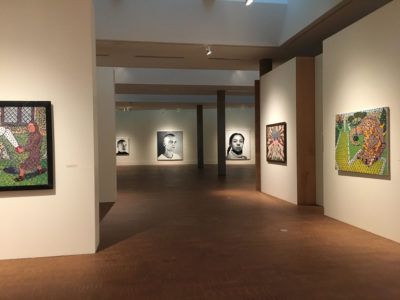
Overscaled, black and white, photorealistic portraits on the back wall of the Faulconer Gallery from exhibit, “Faced: Charles Bierk,” are juxtaposed with the vivid colors and fictional figures of Tom Schneider’s “Hippos, Nuns, and Extraterrestrials” in the front half of the gallery.
“It’s storytelling, but it’s also got a kind of zany, crazy, playful, almost pop art but also kind of surreal quality to it,” said Lesley Wright, director of Faulconer Gallery, about Schneider’s work. “Hippos, Nuns, and Extraterrestrials” is an exhibit of paintings displaying fictional figures including a wasp woman, aliens, ghosts and other tabloid or late-night B-movie-inspired content.
Schneider studied at the Art Institute of Chicago, under a group called “Hairy Who,” or the “Chicago Imagists.” This group was responsible for art which, Wright said, is “art that has a subject and a story and figures but it’s certainly not what we would call representational typically, as you can see from looking at his [Schneider’s] work.”
On the surface of each of his paintings is a pattern of oval shapes, which when looked at closely represent small eyeballs and mouths. The pattern varies from painting to painting, but it’s always there in some capacity. One some of the paintings, the pattern looks like small faces while in others the distribution of mouths to eyeballs is more random. On one painting, the pattern starts small on the top and grows in the waves of a depiction of an ocean.
Wright said that the pattern adds a dimension to the paintings that is “very abstract, but what they remind me of is that there’s always an audience watching,” she said. “It’s interesting because some people immediately look at the subject and some people immediately respond to the eyes and mouths. It really depends on the person.”
The origin of the pattern comes from other of his works of art, including two large collage portraits made out of smaller faces. Wright said that Schneider began by drawing faces out of his high school yearbook in India ink and then cut them out and used them as the pieces of his collage. Those faces are how Wright said Schneider discovered the mouths and eyes that have come to serve as a type of signature.
These two portraits also serve as a connection to the other exhibit in Faulconer right now, “Faced: Charles Bierk,” which features almost exclusively portraits. Daniel Strong, one of Faulconer’s curators, was introduced to Canadian painter Bierk’s work while planning an exhibition of another artist, John Scott. The gallery that represents Scott, the Nicholas Metivier Gallery, took Bierk on when he finished graduate school at the Ontario College of Art and Design in Toronto.
In December, Strong saw one of Bierk’s portraits at the Art Basel fair in Miami. It was a portrait of another Canadian painter, Tau Lewis. Lewis’ portrait is the first one you see when you walk into the gallery.
“As soon as I saw the portrait of Tau Lewis I knew that was the one that I wanted. I can’t really explain why other than the fact that this portrait of a very self-possessed, kind of captivating woman,” he said.
Strong and the gallery staff opted to open up the space as much as possible by using movable walls, and open the windows to let in natural light. Because often the exhibits in the space are works of art, natural light is often shut out. Strong took this opportunity to brighten the space, as paintings are able to withstand sunlight without fading, unlike works on paper.
“It’s been rare that we’ve been able to open this space up even this much,” Strong said. “And it’s a curator’s dream to put kind of one picture on a wall and it’s such a dramatic space and I just think they fill the space really well.”
Also in the exhibit is a glimpse into Bierk’s process when creating these vivid and massive portraits. Strong said he starts by choosing a subject and photographing them, before putting grids onto the photograph and changing it to black and white in Photoshop, before then transferring the grids to the canvas. None of the process photographs featured correspond with a painting in the exhibit, because Strong and Bierk agreed they didn’t want people to immediately start comparing them.
The two exhibits will be in the Faulconer Gallery until Sept. 16. The gallery is open every day except for Sunday from 11 a.m. to 5 p.m..
